Creating an Einkorn Sourdough Starter
We love einkorn sourdough starter for its nutritional profile. Einkorn flour is higher in protein, phosphorus, potassium, and fat than modern wheat flour. Einkorn is rich in lutein, a carotenoid associated with eye health, and contains many antioxidants. All the nutrients become more bioavailable through fermentation, too.
The gluten in einkorn is different from that in modern wheat, which may make it easier to digest for some people, though it is not gluten-free and unsuitable for those with celiac disease.
The flavor of einkorn flour is another aspect that sets it apart. It has a nutty and slightly sweet taste, making it a preferred choice for artisan bakers and chefs. Due to its lower gluten content, it naturally results in a denser, richer texture in bread.

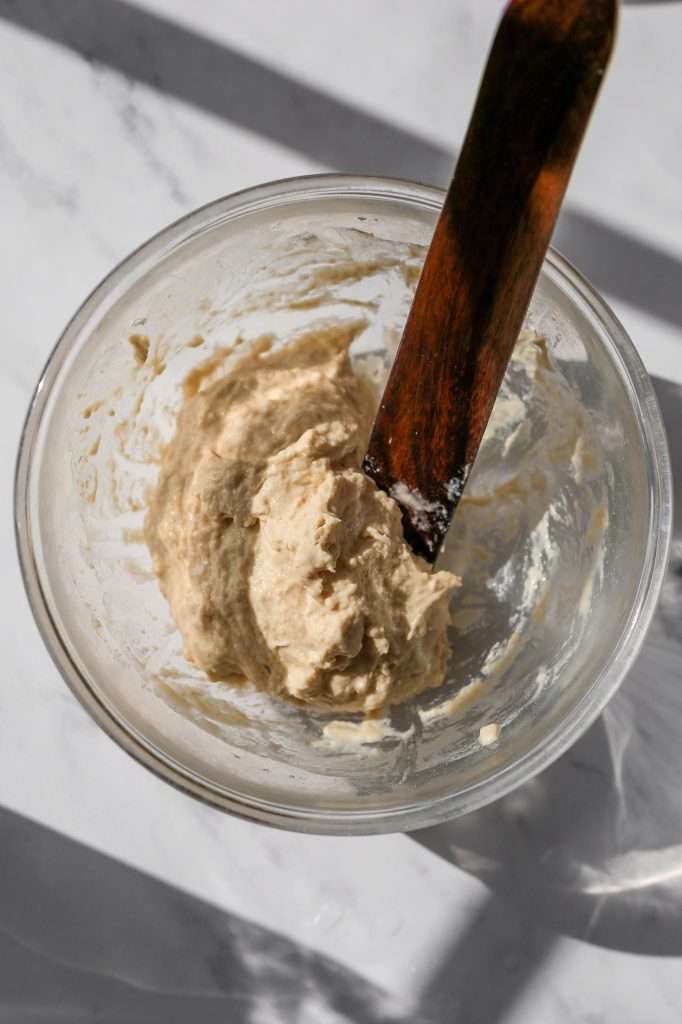
What is Einkorn Flour?
Einkorn flour, derived from one of the earliest known types of wheat, Triticum monococcum, has been cultivated for thousands of years.
Originating in the Fertile Crescent, a region spanning the Middle East, einkorn is an ancient grain, meaning it has remained unchanged over millennia. This heirloom variety of wheat is genetically and structurally distinct from modern wheat. Einkorn has a more straightforward genetic composition: a diploid (having two sets of chromosomes), compared to the hexaploid structure (six sets of chromosomes) of common wheat. This genetic simplicity contributes to its unique characteristics.
Einkorn’s cultivation is limited compared to modern wheat, primarily due to its lower yield and more labor-intensive harvesting process. However, its resurgence in popularity is driven by a growing interest in traditional and whole foods. Einkorn flour is typically sourced from small-scale farmers and organic producers, emphasizing sustainable and traditional farming methods.
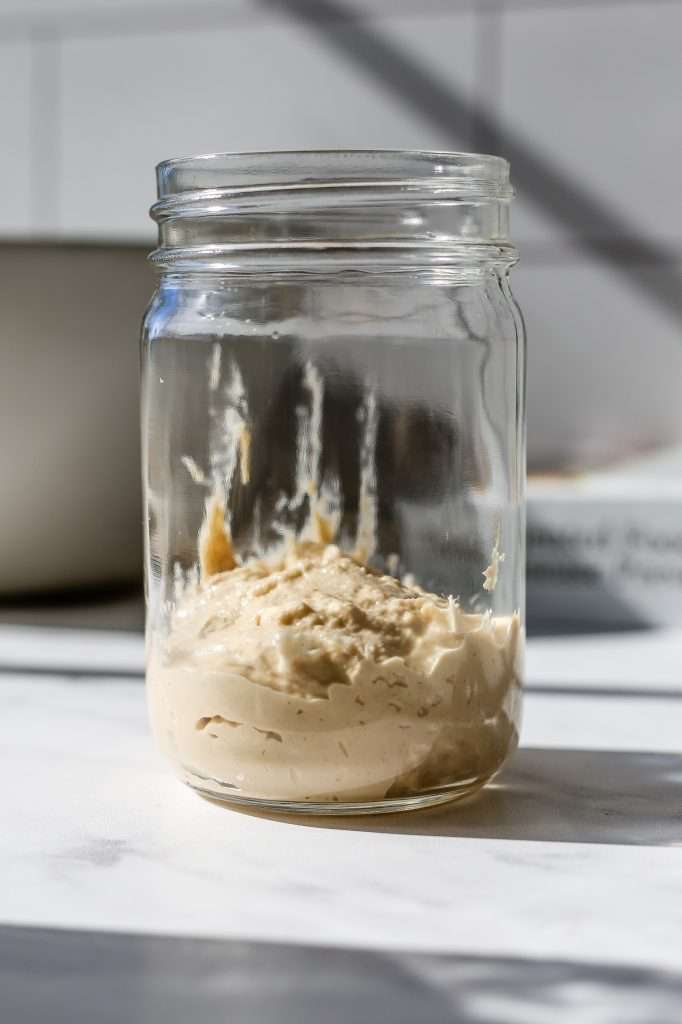
Optional Starter Cultures for Einkorn Sourdough Starter
Einkorn flour can be quite expensive. An easy way to ensure you have sourdough starter success on the first try is to create your starter from an already established starter. You can easily begin feeding any starter einkorn flour.
Here are some options for dried sourdough starters to create your starter with:
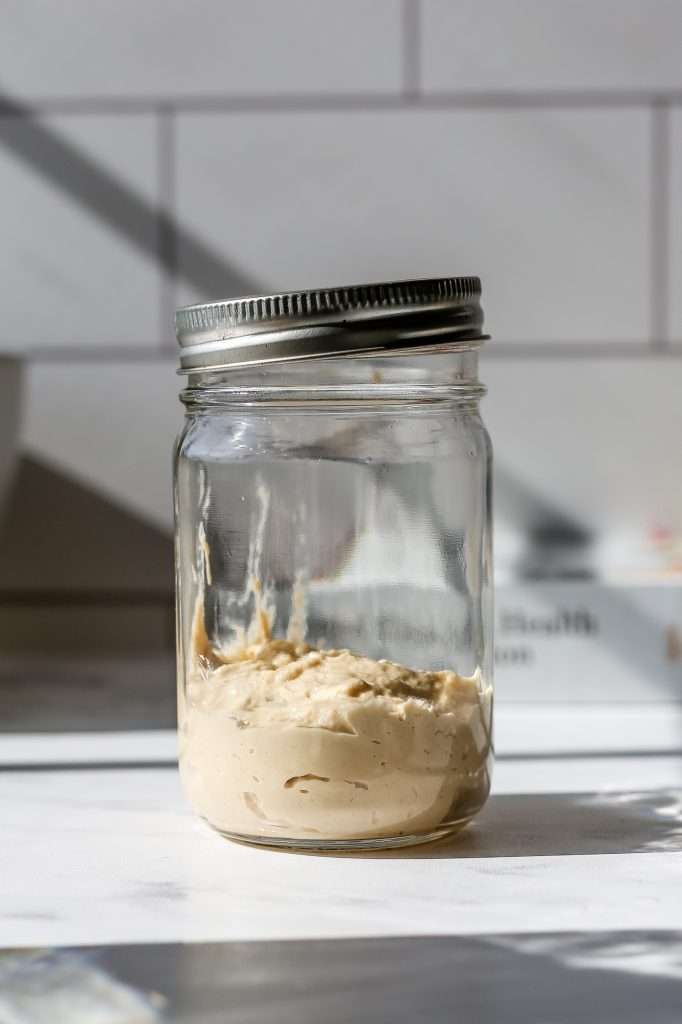
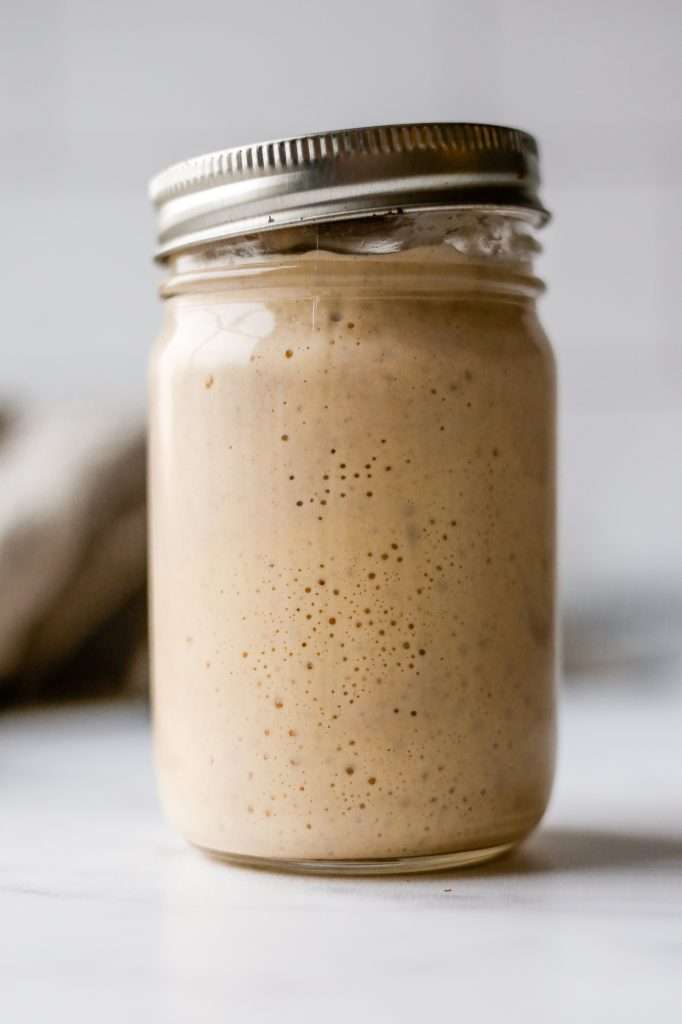
Discarding and Feeding Your Einkorn Sourdough Starter
I’m sure you’ve heard the phrase “discard and feed.” The point of discarding and feeding your sourdough starter is to replenish the microbe’s food source so that the accumulation of waste products does not kill the yeast and bacteria.
In wild sourdough starters, yeasts ferment wheat carbohydrates into alcohol and carbon dioxide. Then, bacteria in the sourdough starter metabolize the alcohols produced by the yeasts into acetaldehyde and then into acetic acid… making it sour.
There are many ways to feed a sourdough starter, and no one way is “correct.” Sourdough starters can be thicker and drier or thinner and more hydrated. You can also use any flour to feed a sourdough starter, but here, we will focus on all-purpose Einkorn flour.

Ingredients and Tools to Feed an Einkorn Sourdough Starter
- Flour: I’ve used many flours to make a sourdough starter. For this recipe, we will use organic all-purpose einkorn flour. It’s one of my favorites for my starter, even if I’m not baking einkorn bread.
- Water: Filtered water is best, but you can use tap water if you have good tap water. I use tap water that has been filtered through our water filter pitcher.
- Glass Jars and Cheesecloth: I like to use a glass weck jar for my starter. The mixture needs access to air to grow well, so you can use the glass weck jar lid without sealing it or something like layered cheesecloth with a rubber band. A loose mason jar lid works great, too, but can cause an issue in the summer if you deal with fruit flies and such in your home.
- Kitchen Scale: If you frequent our blog, you should already have one of these on hand. You can find a good kitchen scale option HERE.
- Environment: Temperature is critical for growing healthy yeast and bacteria in a sourdough starter. Your kitchen temperature should be between 60-80 degrees F. Colder temperatures mean slower growth. Cold isn’t bad, it can just take much longer.

How to Feed a Sourdough Starter with Einkorn Flour
The feeding ratio is adjustable in these instructions. The sourdough starter is forgiving; you can adjust the ratio of flour to water to make it thicker or thinner. These amounts are just a great starting point. If you have trouble with your starter rising, check out this blog: Why is My Sourdough Starter Not Rising? How to Fix a Flat Starter
Step One (Day 1)
- In a bowl, combine: 50 grams of organic all-purpose einkorn flour and 40 grams of water
- Use a spatula to combine the flour and water. Stir until there are no clumps and the mixture is smooth but thick.
- Scoop the mixture into a clean glass jar.
- Loosely set a lid on the top or secure a breathable covering to the jar (i.e., cheesecloth) and leave the mixture on the counter for 24 hours.
Step Two (Day 2)
- Stir sourdough starter mixture.
- Add in 50 grams of organic all-purpose einkorn flour
- Add 40 grams of water.
- Mix and scrape down the sides. Replace a breathable lid. Leave the mixture on the counter for 24 hours.
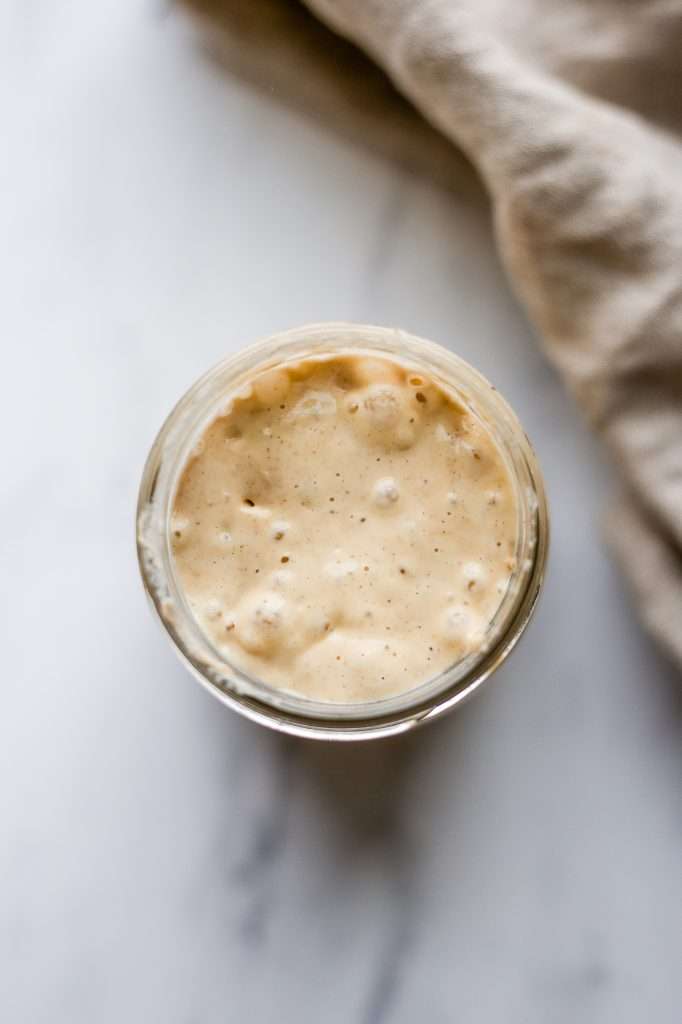
Step Three (Days 3-7, Feeding and Discarding)
- To a clean bowl, add: 20 grams einkorn sourdough starter mixture from day 2, 50 grams of organic all-purpose einkorn flour and 40 grams of water
- Stir until evenly combined, and scoop into a clean jar.
- Replace the breathable lid and allow it to ferment for 24 hours.
- Discard any remaining original starter mixture. Or you can find fun ways to use sourdough starter discard, like this muffin recipe.
- Repeat every 24 hours through day 7.
To keep your starter active and to make starter suitable for baking, use the following ratios for feeding: 10% starter, 50% flour, 40% water. (example: you need 200 grams of starter for a recipe, so you want to make 250 grams of starter, so you have some left to feed. You will mix 25 grams of starter, 125 grams of flour, and 100 grams water); These amounts work for most flour, but add a little more water if it’s too dry. Starters are forgiving.

Easy Sourdough Baking Recipe
- Rustic Sourdough Half Einkorn Bread Recipe
- Dutch Oven Sourdough Boule Recipe
- Rustic Rosemary Sourdough Bread
- The Best Maple Pecan and Cinnamon Sourdough Bread Recipe
Things You May Need:
Print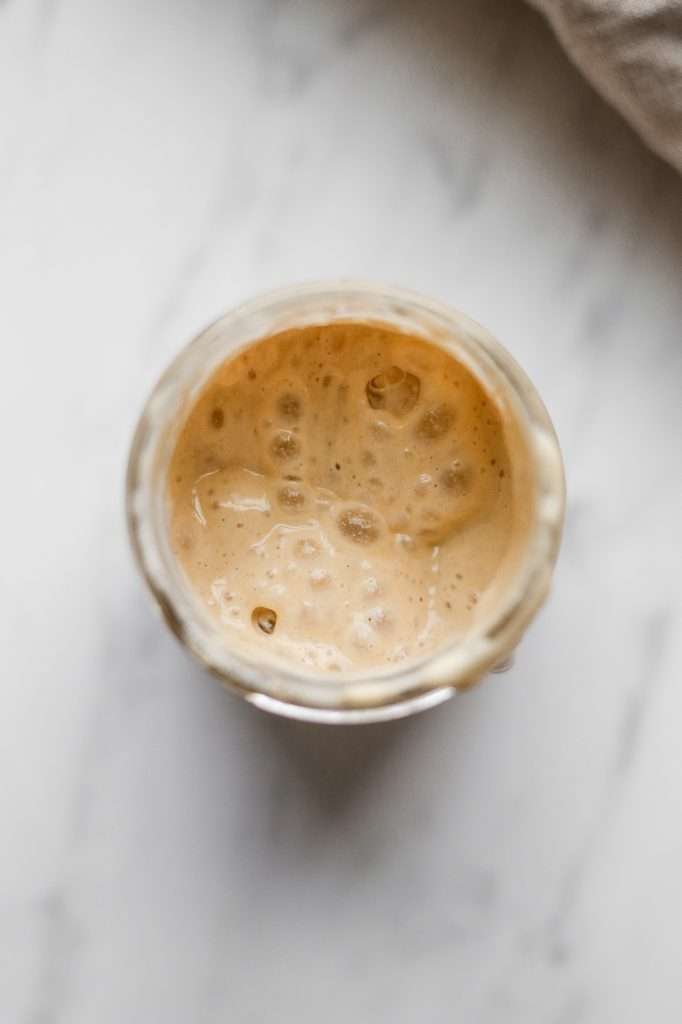
Einkorn Sourdough Starter From Scratch
Learn how to make and feed a sourdough starter with einkorn flour. You’ll have a healthy einkorn sourdough starter for baking flavorful, naturally leavened bread in seven days!
- Prep: 10 minutes
- Total Time: 168 hours 10 minutes
Ingredients
- organic all-purpose einkorn flour
- filtered water
- established starter (optional, see notes)
Instructions
- The feeding ratio is adjustable in these instructions. I suggest following the ratio as written for the first 7 days; then you can adjust it to be thicker or thinner as desired. If you use whole wheat einkorn flour instead of all purpose, you may need to adjust the amount of flour and water. Whole wheat flour generally absorbs more water.
- (Day 1) In a bowl combine 50 grams of organic all-purpose einkorn flour and 40 grams of water.
- Use a spatula to combine the flour and water. Stir until there are no clumps and the mixture is smooth yet thick.
- Scoop the mixture into a clean glass jar.
- Loosely set a lid on the top or secure a breathable covering to the jar (i.e. cheesecloth) and leave the mixture on the counter for 24 hours.
- (Day 2) Stir sourdough starter mixture.
- Add 50 grams of organic all-purpose einkorn flour and 40 grams of water to the starter mixture in the jar. Mix and scrape down the sides.
- Replace a breathable lid. Leave the mixture on the counter for 24 hours.
- (Days 3-7, Feeding and Discarding) to a clean bowl add 20 grams sourdough starter mixture from the previous day, 50 grams of organic all-purpose einkorn flour and 40 grams of water
- Stir until evenly combined, and scoop into a clean jar.
- Replace the breathable lid and allow it to ferment for 24 hours.
- Discard any remaining original starter mixture. Or you can find fun ways to use sourdough starter discard here.
- Repeat steps 9 through 12 every 24 hours until you reach 7 days. At this point, it should be bubbly.
- (The Night Before Baking) Feed your starter 8 hours before you plan to make bread dough.
- To keep your starter active and to make starter suitable for baking, use the following ratios for feeding: 10% starter, 50% flour, 40% water. (example: you need 200 grams of starter for a recipe, so you want to make 250 grams of starter, so you have some left to feed. You will mix 25 grams of starter, 125 grams of flour, and 100 grams water); These amounts work for most flour, but add a little more water if it’s too dry. Starters are forgiving.
- (Baking Day) Perform a float test by dropping a teaspoon of starter into a cup of room-temperature water. If it floats, it’s ready for use. If your starter does not float, continue to feed and discard until it passes the float test.
- If your starter passed the float test, put some starter aside to continue feeding. Use the rest of the starter for your baking recipe.
- Again, to keep your starter active and to make starter suitable for baking, use the following ratios for feeding: 10% starter, 50% flour, 40% water. These amounts work for most flour, but add a little more water if it’s too dry. Starters are forgiving.
Notes
- using dried starter, or live starter to establish your new einkorn starter is a great option. To use already established starter to create yours, skip to step 9 to begin the feeding and discarding process. Here are some options for sourdough starters to create your own starter with:
- This recipe is formulated using organic all-purpose einkorn flour. If you use a different type of flour your starter will be a different consistency and texture.
- The type of flour you use will influence the flour to water ratio you should use. Whole grain flours, especially sprouted flours, work well with a 1:2 flour to water ratio. White flours like bread flour and all purpose work best with a ratio between 1:1 and 2:1 flour to water.
- You may notice some early watery separation. This is normal and just means you need to adjust the flour to water ratio. Simply add more flour to your feedings to thicken the starter.


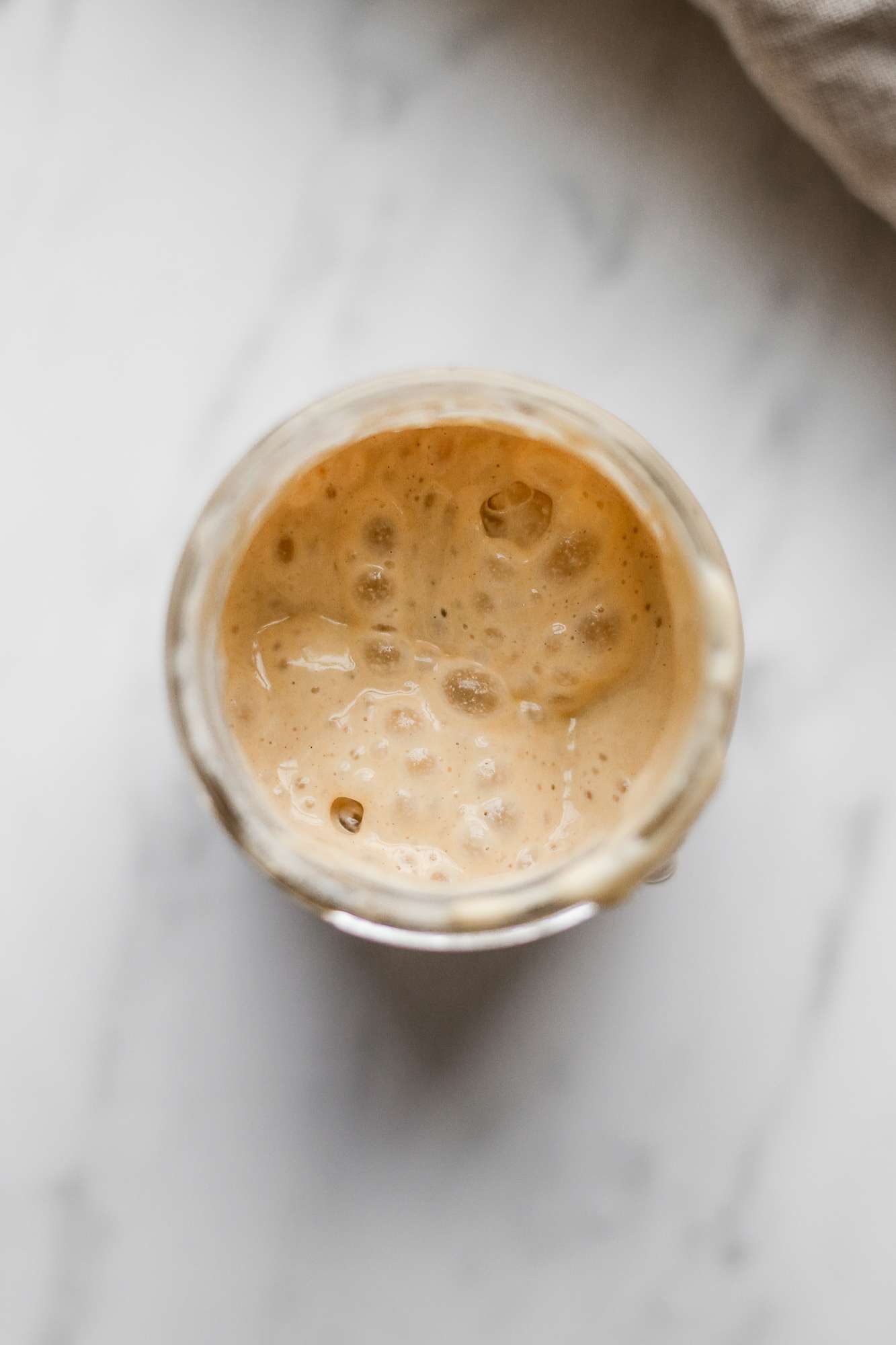

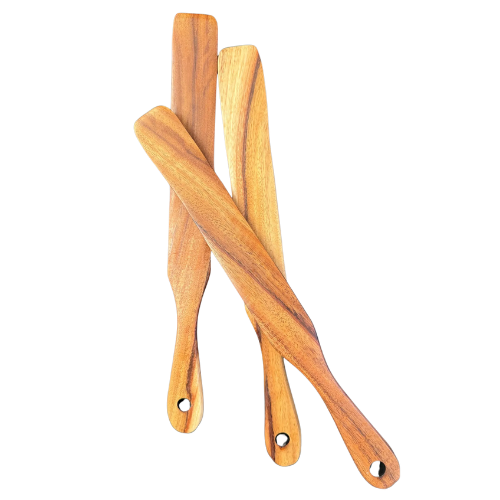
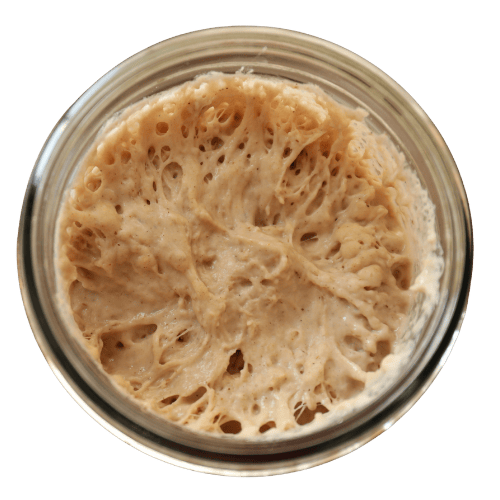

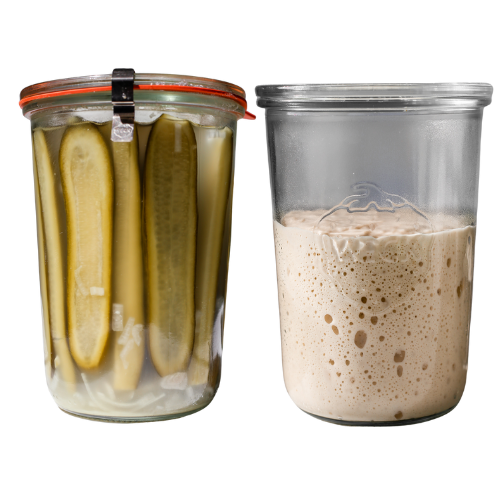












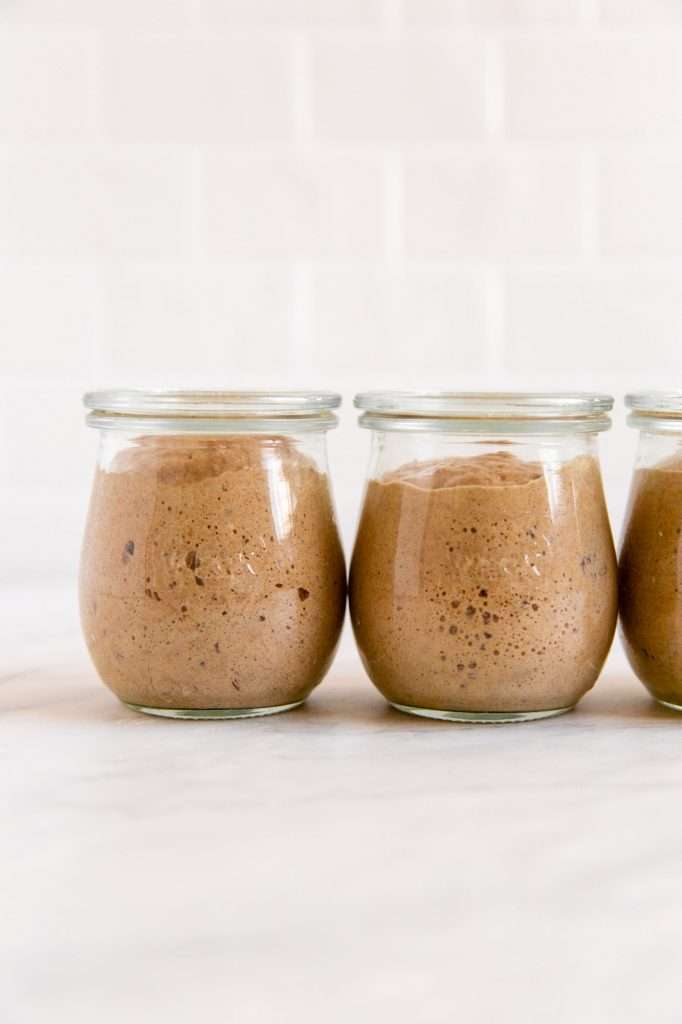
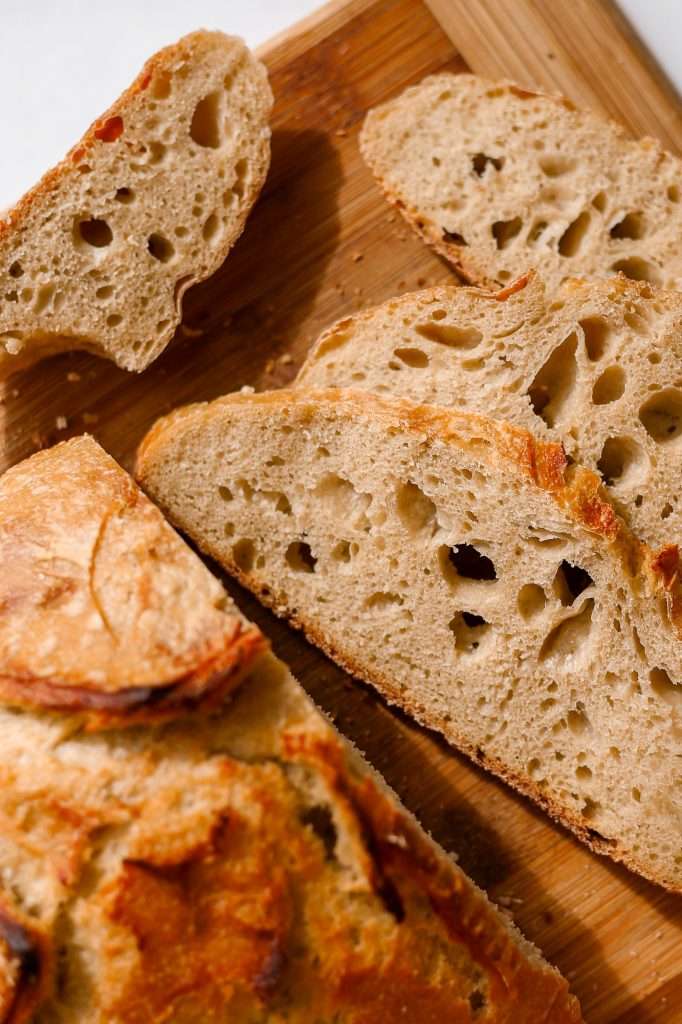



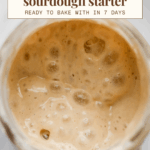
Is there any reason that I couldn’t take my existing healthy starter and just start feeding it with different flour vs starting from scratch?
nope, you can do that! just switch it over.
Can I use half the amounts for my starter? 25 grams of the flour and 20 grams of water? Thanks 😊
absolutely! You can halve or double amounts as needed. The ratio stays the same, and that’s the important part.
Thanks so much!😍
Hello! I love your blog. I have a few questions. I got whole wheat einkorn and inadvertently was following your other starter recipe, so my ratio was 50 g flour, 55g water. (I did more water since I read whole wheat is thirsty) For feed and discard I did 50 g starter, and then my flour-water ratio. Not seeing bubbles and it seems too thin. It smells sour like it’s working though. So my question is why do you only use 20g starter for feed and discard for this recipe? Should I use less water to make it thicker? Thank you!
All flours absorb different amounts of water and produce different amounts of “hooch”. When sourdough starters ferment, they turn some of the solids into more liquids and it thins out. So, some starters do better with feeding less starter, since the starter adds more liquids than solids to the mixture.
When in doubt, make it thicker. once you have a bubbly established starter, you don’t need to be so exact. If it looks thin add more flour until it’s like a sticky dough.
Starter had a thick crust on top after day 1. Tried mixing it in but it was too thick and wouldn’t dissolve. I live at elevation in a dry climate. Thoughts on how to modify so this doesn’t happen? Thank you!
You can add a bit more water when feeding to thin it out. And instead of using a breathable cloth lid, use a solid lid but leave it loose.
Would Jovial Organic einkorn – Whole wheat flour- work for this recipie ?
it should
This is great! I snagged 0.5 oz (14g) of dried starter from Etsy. To make this an Einkorn starter, would I simply first add water to dissolve the dried starter, and then immediately add 50g of Einkorn all purpose and 40g water? Or is that far too much to start with? Other instructions note to just add about 15g or 20g of flour only. Should I also reduce this down or does Einkorn just require a lot more flour to start? Thank you!
you can reduce it down (cut the amounts in half) to get it started.
If you’re making a levain and want to maintain the starter past seven days, what would be your ratios of starter, flour, and water?
Same ratios as this recipe! If you’re baking more, increase the quantities, if you’re baking less, decrease the quantity. If you find your starter is too thin and runny, just add a little more flour. If you find it’s too thick, add a little more water.
dang it… one other question… how would you adjust this recipe for high altitude cooking (5280)?
you shouldn’t need to adjust the starter recipe at variable altitudes. The only thing you may need to look out for is humidity difference. If you use a cloth covering your starter might dry out on the top and that just means you need to use a bit more water. Starters are super forgiving.
inadvertently, I’m making this starter on some very cold days. You do say it’s ok and it’s just going to take longer. When can I begin to use the starter as discard for baking? In your recipe, it’s on day 3 but in my case how can I know when it’s ready?
when it’s rising up in the jar and bubbly you can begin using it.
Thank you. if I could also ask: why continue feeding the starter for another week or so if it’s already active after 3 days? I know too little about it.
not everyone’s will be active that fast. This recipe is written to accommodate lots of variation for all people who make it. How fast it becomes active and bubbly depends on the flour, the water, the temperature etc. A week is generally enough time to ensure it’s well established.
I did my float test and it didn’t float. It doesn’t say how much starter to use when having to keep feeding. Do I go back to the 20grams and the 50/40?
Yes, you can always use those feeding amounts. But once it’s bubbly and established I usually turn to feeding it by eyeballing the amounts. It should look like thick muffin batter after you feed it. If it’s too thin, add more flour. if it’s too thick mix in a tiny bit more water until it looks right.
Why feed every 24hrs instead of every 12hrs?
why feed every 12 hours? I only ever feed my starters once a day.
i’ve seen some recipes say feed einkorn every 12 hours. what’s better, 12 or 24? what’s the difference?
either is fine. Feed every 12 hours will probably make it super bubbly.
First sourdough starter that was easy to follow and came out perfect. Making my bread this weekend.
omg yay!! Thanks for leaving a review!